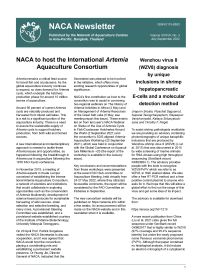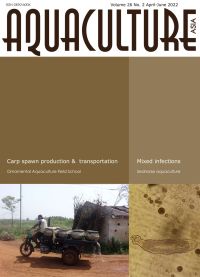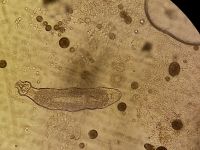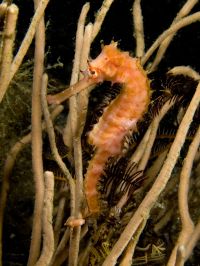With the implementation of the new aquatic animal disease reporting in the Asia Pacific region from January 2021, and in lieu of the published QAAD Reports (last issue published was 4th quarter of 2020), NACA is publishing reported aquatic animal diseases submitted by countries in the Asia-Pacific region. This report covers the fourth quarter of 2021 and the original and updated reports can be accessed from the QAAD page.
In this issue:
- NACA to host the International Artemia Aquaculture Consortium
- Wenzhou virus 8 (WZV8) diagnosis by unique inclusions in shrimp hepatopancreatic E-cells and a molecular detection method
- Report on the Webinar on Management of Artemia Resources of the Great Salt Lake, 5 May 2022
- Twentieth Meeting of the Asia Regional Advisory Group on Aquatic Animal Health
In this issue:
- Ornamental Aquaculture Field School: A new extension approach
- State of the art of carp spawn production and transportation at Ramsagar, Bankura District, West Bengal, India
- Seahorse aquaculture: A new paradigm of commercial activity
- Mixed infections in tropical freshwater fish culture systems: A potential emerging threat for successful aquaculture
- NACA Newsletter
The aquatic environment contains many opportunistic pathogens and fish are frequently infected by a range of parasites, bacteria, viruses, and fungi. In most incidences of disease, the involvement of two or more pathogens are often seen, which in turn complicates diagnosis and treatment. Here we present a few case studies on mixed infections in aquaculture systems, which may become more common in future due to changing climatic patterns and associated adverse impacts on water quality. Mixed infections seem to be a big challenge to diagnostic laboratories and health specialists in terms of providing a correct diagnosis and treatment.
Seahorses are charismatic livebearers that come under the genus Hippocampus spp. Seahorses are widely distributed in tropical and temperate waters (mostly in the Indo-Pacific region) and different species can tolerate a salinity range of 6-35 ppt.
Seahorses are highly in demand for traditional medicines and curio trade purposes in the dried form and live ones are popular in the marine ornamental aquarium trade. As a result, they are vulnerable to overfishing. Since over-exploitation of these charismatic species has resulted in a drastic reduction in their natural populations, aquaculture of seahorses on a commercial scale may help to reduce pressure on wild stocks. This article provides an overview of seahorse aquaculture in India including research, the production cycle, production systems, and disease issues.



